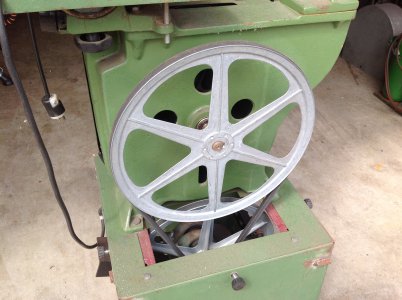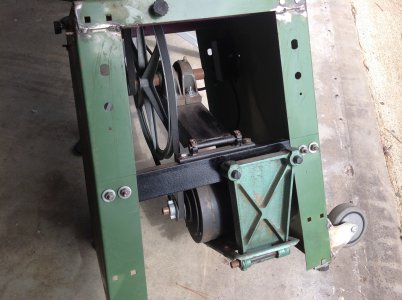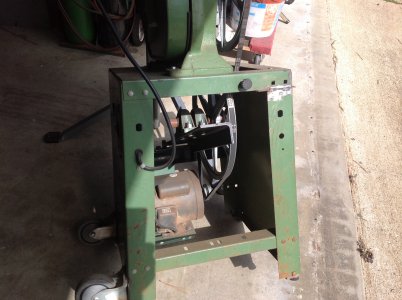I have all 3 style saws in the shop. A Startrite horizontal/vertical bandsaw, a converted Rockwell vertical bandsaw, and a Racine power hacksaw. By far the most used is the Startrite horizontal/vertical, although it's never been used in the vertical position. The next most used one is the Racine 14" power hacksaw, and the least used is the Rockwell vertical.
The Startrite is the HW175 model (7"x11"). It does 85%+ of all the sawing. It can be used either wet or dry. I use it dry with an Ellis 10-14 bimetal blade. It's an excellent machine, and was well worth the money. The 3/4"x 98" blades usually run between $30.00 and $42.00 depending on the blade material and tooth configuration. Depending on hours of use they generally last 2-3 years.
The Racine power hacksaw is the next most used. It's generally put into service when the Startrite is busy. This is a 14" wet saw with 2 blade speeds. Either 100 strokes per minute, or 140 strokes per minute. We used this style saw exclusively in the shop where I worked, and to be truthful I bought it not only because I knew it would dependable, but also for slightly nostalgic reasons. I have a variety of blades for this saw ranging from 3tpi to 14 tpi. It's a dependable workhorse that will probably last another 50 years (mine was built in 1966) with minimal maintenance.
The only downside to this style saw is that the blades are becoming increasingly more expensive. I used to buy them for $1.00 a piece or less when they fell out of favor in professional shops. The last few times I purchased blades I paid a little over $3.00 per blade. However more recently I see the asking price for the higher quality (Starrett, Blu Mol, etc.) in the $20.00 range. I couldn't understand why there was such a drastic increase in price until I looked in the MSC online catalog. They are asking $22.00 to $28.00 for 14" Starrett blades. I think all the other online and eBay vendors are copying their prices. I do like the saw and to keep it running I have stocked up on blades. I now have in the neighborhood of 60 blades in the cabinet, and keep my eyes open should more appear at a price I'm willing to pay.
These are excellent, well built, and accurate saws. They can generally be bought for about the same price as a HF bandsaw, however it will take some vigilant searching to find blades at a reasonable price. If you're thinking of going this route keep in mind the larger the saw the more expensive the blades. I have seen vendors asking nearly $100.00 per blade for the 24" size.
Another style saw worth looking into is a Cold Saw. There are now several models on the market that closely resemble the standard abrasive chop saw. The main difference is that the blade speed is usually in the 1,800 rpm range rather than the 5,000 rpm range. Blade tooth configurations are usually from 50 to 100 teeth depending on the material to be cut. The price of the saws range from around $200.00 to well over $1,000.00. The blades range in price from $50.00 to well over $200.00 again depending on the size and configuration.
I am currently converting an older B&D chop saw for use on aluminum stock. I picked up the saw nearly 20 years ago for almost nothing. It's sat in the corner until recently. I purchased a speed controller to lower the blade speed to 2,000 rpm, bought a 100 tooth aluminum blade, and am currently making a table to accommodate long stock.
Racine 14" power hacksaw:
View attachment 302857
Startrite Horizontal/Vertical Bandsaw:
View attachment 302858
Rockwell Vertical Bandsaw:
View attachment 302860




